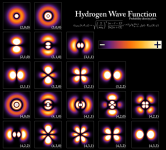fromderinside
Mazzie Daius
- Joined
- Oct 6, 2008
- Messages
- 15,945
- Basic Beliefs
- optimist
Gentlemen, I take it you don;t object to being called that, this was resolved in 1967.
To wit:
Mr. McGuire: I want to say one word to you. Just one word.
Benjamin: Yes, sir.
Mr. McGuire: Are you listening?
Benjamin: Yes, I am.
Mr. McGuire: Plastics.
Benjamin: Exactly how do you mean?
Mr. McGuire: There's a great future in plastics. Think about it. Will you think about it?
Update. there will be more placstic objects in the ocean than fish in a few years.
To wit:
Mr. McGuire: I want to say one word to you. Just one word.
Benjamin: Yes, sir.
Mr. McGuire: Are you listening?
Benjamin: Yes, I am.
Mr. McGuire: Plastics.
Benjamin: Exactly how do you mean?
Mr. McGuire: There's a great future in plastics. Think about it. Will you think about it?
Update. there will be more placstic objects in the ocean than fish in a few years.


